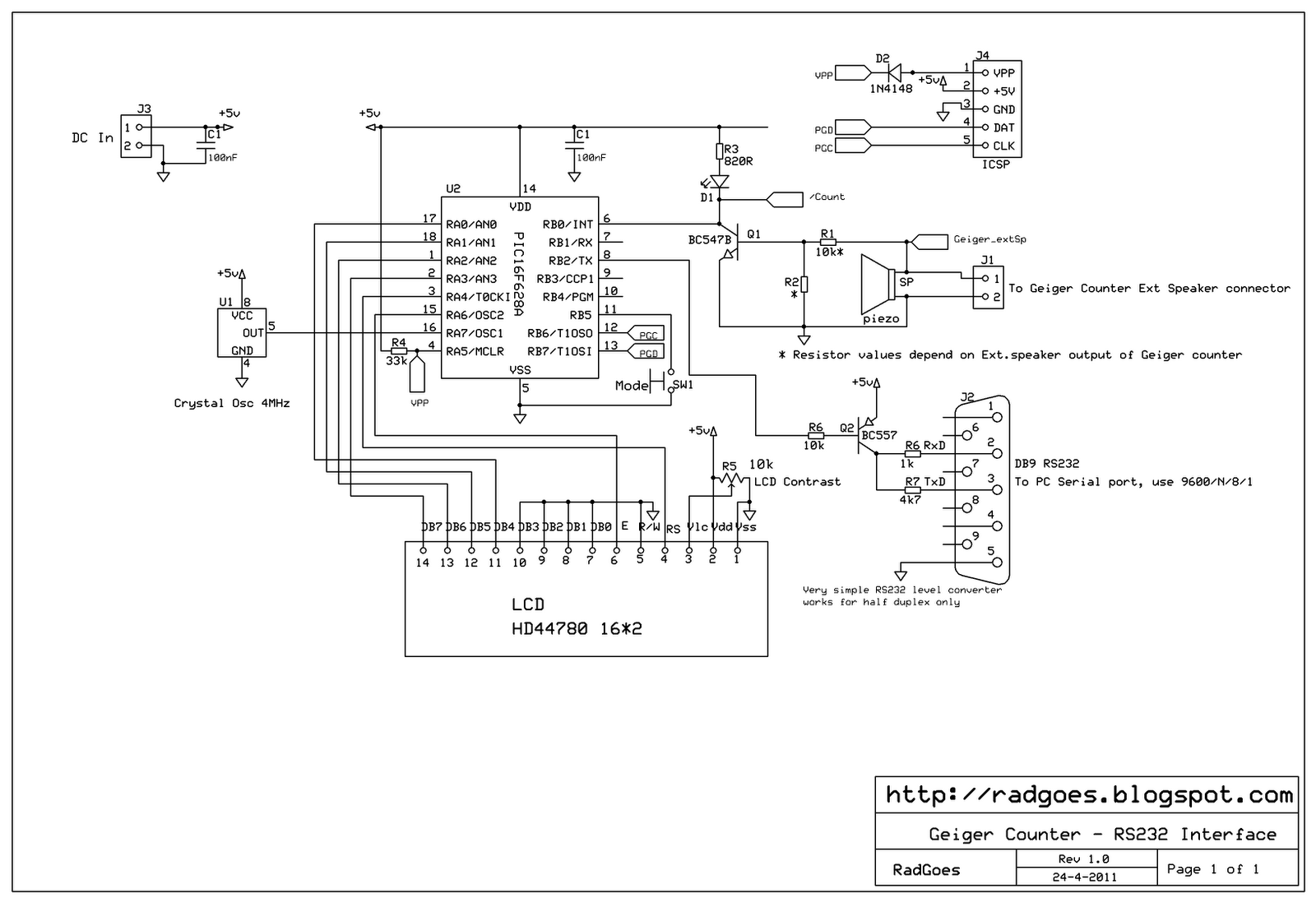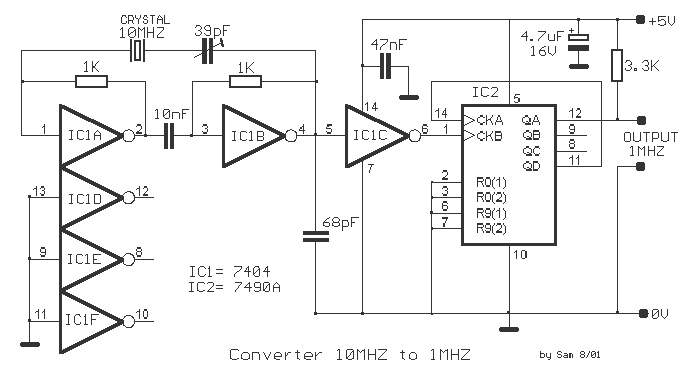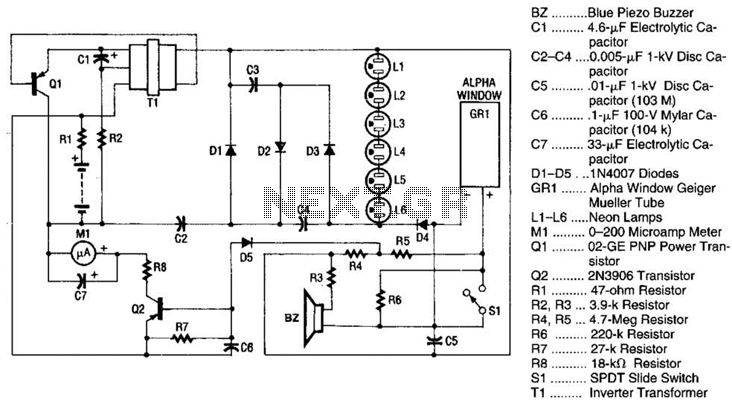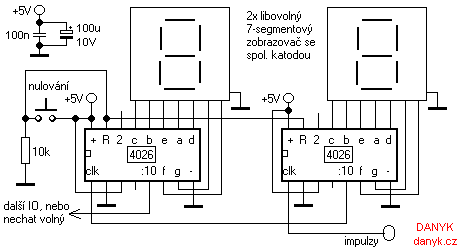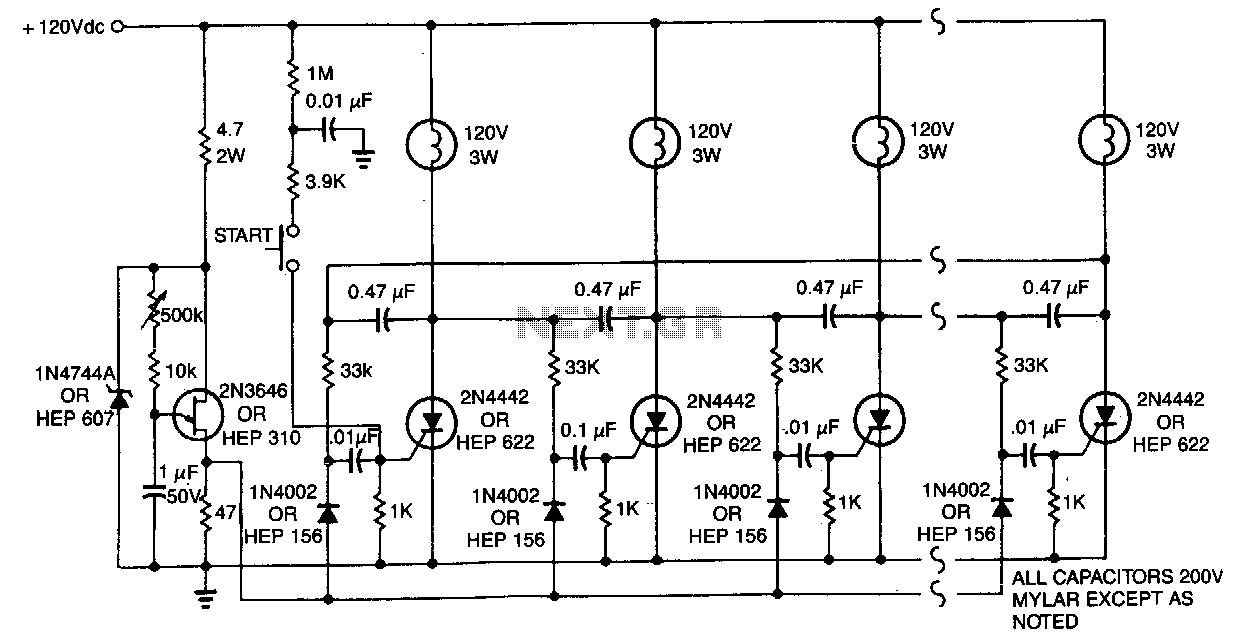
10Mhz universal counter

This is a minimum component complete Universal Counter. It can use input frequencies up to 10 MHz at INPUT A and 2 MHz at INPUT B. If the signal at INPUT A has a very low duty cycle, it may be necessary to use a 74121 monostable multivibrator or a similar circuit to stretch the input pulse width to ensure that it is at least 50 ns in duration.
The Universal Counter circuit is designed to count events or pulses with high precision, accommodating input frequencies of up to 10 MHz for INPUT A and 2 MHz for INPUT B. The architecture typically consists of flip-flops that are triggered by the incoming signals, with additional components to manage the counting process and display the results.
In scenarios where the duty cycle of the signal at INPUT A is low, the pulse width may not meet the minimum requirement for reliable counting. To address this issue, a 74121 monostable multivibrator can be employed. This component is capable of generating a stable output pulse of a specified duration when triggered by an input signal. By configuring the 74121 to produce a pulse width of at least 50 ns, the counter can reliably register the event.
The circuit design may include additional features such as debouncing for mechanical switches, reset functionality, and the ability to toggle between different counting modes. The output can be interfaced with LED displays or other digital readouts for user-friendly interaction. Overall, the Universal Counter is a versatile tool in various applications, including digital signal processing, frequency measurement, and event counting, making it essential in electronic measurement and control systems.This is a minimum component complete Universal Counter. It can use input frequencies up to 10 MHz at INPUT A and 2 MHz at INPUT B If the signal at INPUT A has a very low duty cycle, it may be necessary to use a 74121 monostabLe multivibrator or similar circuit to stretch the input pulse width to be able to guarantee that it is at least 50 ns in duration. 🔗 External reference
The Universal Counter circuit is designed to count events or pulses with high precision, accommodating input frequencies of up to 10 MHz for INPUT A and 2 MHz for INPUT B. The architecture typically consists of flip-flops that are triggered by the incoming signals, with additional components to manage the counting process and display the results.
In scenarios where the duty cycle of the signal at INPUT A is low, the pulse width may not meet the minimum requirement for reliable counting. To address this issue, a 74121 monostable multivibrator can be employed. This component is capable of generating a stable output pulse of a specified duration when triggered by an input signal. By configuring the 74121 to produce a pulse width of at least 50 ns, the counter can reliably register the event.
The circuit design may include additional features such as debouncing for mechanical switches, reset functionality, and the ability to toggle between different counting modes. The output can be interfaced with LED displays or other digital readouts for user-friendly interaction. Overall, the Universal Counter is a versatile tool in various applications, including digital signal processing, frequency measurement, and event counting, making it essential in electronic measurement and control systems.This is a minimum component complete Universal Counter. It can use input frequencies up to 10 MHz at INPUT A and 2 MHz at INPUT B If the signal at INPUT A has a very low duty cycle, it may be necessary to use a 74121 monostabLe multivibrator or similar circuit to stretch the input pulse width to be able to guarantee that it is at least 50 ns in duration. 🔗 External reference
